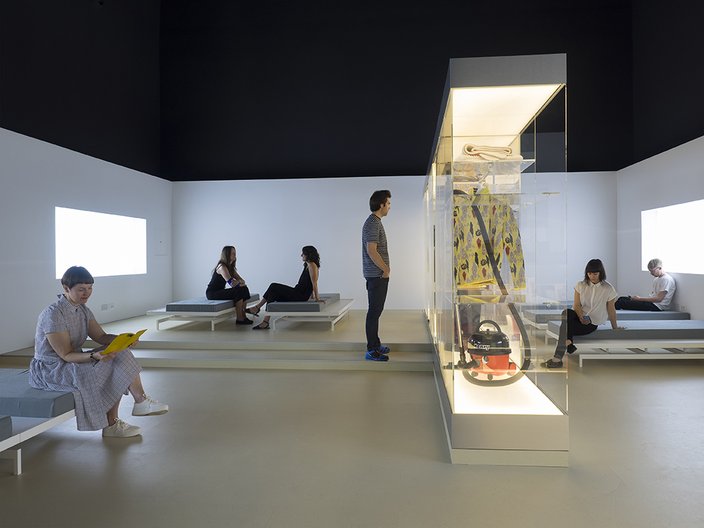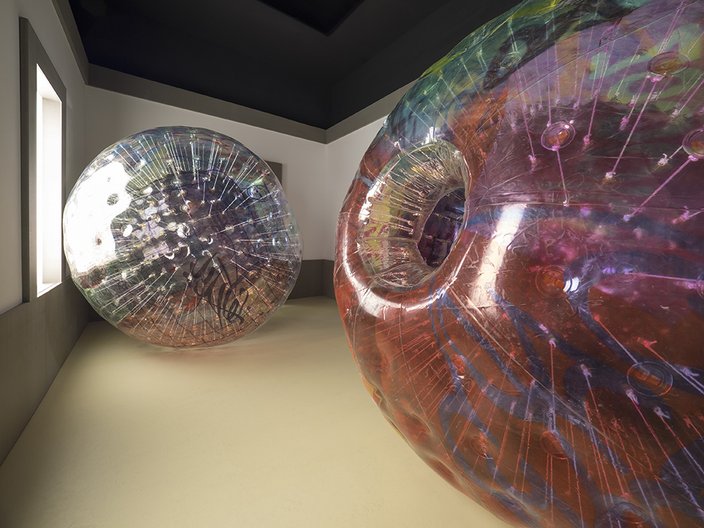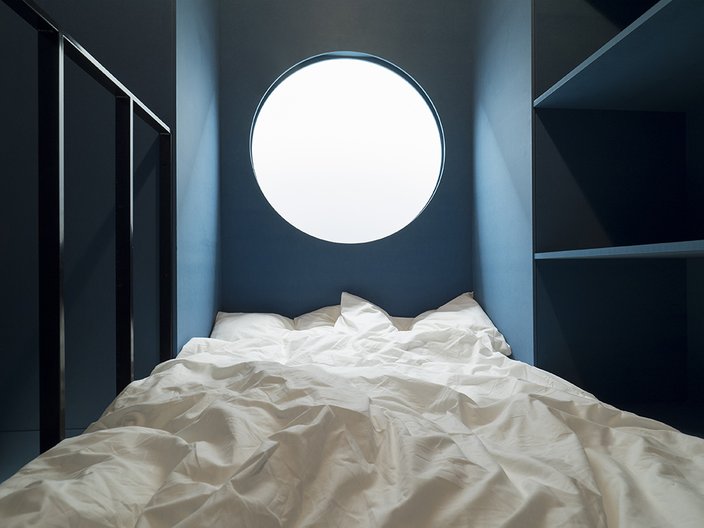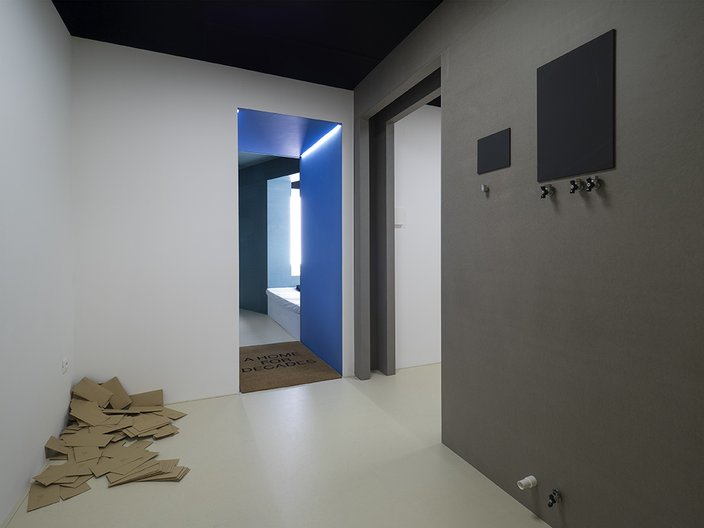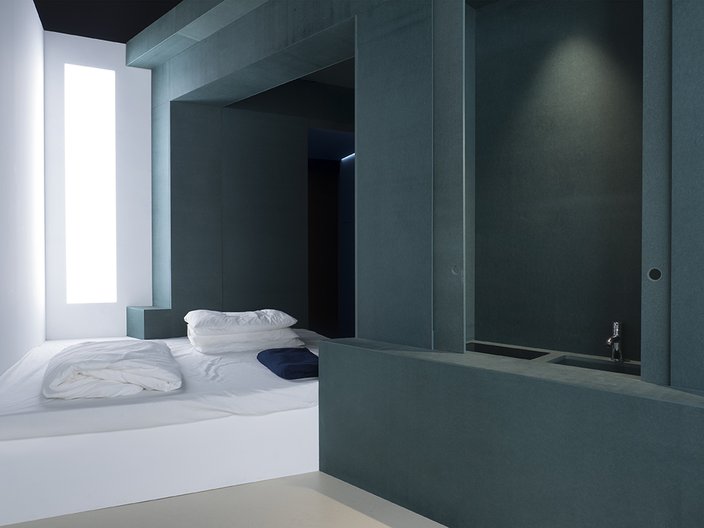15 December 2016
by Gwen Webber
At the close of Home Economics on 27 November this year, the British Pavilion counted over 145,000 visitors with more than 14,000 walking through its doors in the first week. It was apt therefore that the first part of the show visitors encountered was an oversized British front door to welcome them in. Based on the edict by Queen Elizabeth I in 1850 that each home should have a front door to keep out the plague and modelled on no.10 Downing Street, it captured the notion of domestic swiftly for passers-by and became the proverbial ribbon in the opening ceremony when another British institution, comedian and Women’s Equality Party co-founder, Sandi Toksvig knocked on its black panels.
The show went beyond symbolism, however, as it set out a new brief for architects and demonstrated with five proposals of full-scale interior spaces that re-thinking the design of current homes through the perspective of time spent in them is not only imperative as the housing crisis escalates in the UK but also requires collaboration and contribution from multiple disciplines to produce real alternative living environments.
The room titled Years, for example, by Julia King, questioned the properties becoming assets. For this, Julia worked with Naked House Builders and RBS to develop a mortgage that delivered on the so-far elusive idea of an affordable home. Meanwhile the show's curators, Jack Self, Shumi Bose and Finn Williams, proposed a home for Hours, which pushed the boundaries of accepted privacy and communal living to design modular daybeds that offer sanctuary for one or social furniture for many, and a communal wardrobe with JW Anderson clothes alongside Henry the Hoover.
Research behind Days, Months and Decades touched on topical issues including intergenerational living, the use of social media to feel at home and the provision of temporary accommodation for students, workers and renters. Indeed, it became clear that the concept of the home is being challenged in cities around the world, as the Guardian Cities team reveals in the film series, How We Live Now.
True to its ambition to provide a platform for ideas and research, visitors will have met our second group of Venice Fellows, whose interest in independent research, invigilating the exhibition and experiencing life as a Venice resident for one month during the biennale saw them selected from a fantastic batch of applicants. Their enthusiasm and wide-ranging knowledge was a complement to the experience for many visitors.
The British Pavilion contribution would not have been complete without a series of discussions and workshops addressing the issues raised in the show as well as playing host to a number of universities, neighbouring pavilions and partners including RIBA and the Architecture Foundation, some of which can be heard in these podcasts, all of which contributed to a wider architectural discourse. Bringing these issues back to the UK has also been important to the programme during the Venice Architecture Biennale, so in November, along with the Architecture Fringe and Creative Dundee, the British Council presented the panel discussion What is the Future of Domestic Life? at the DCA.
As if that wasn’t enough, it is by no means an exhaustive list as the research behind Home Economics continues in the work of the curators and room designers, whom we should all keep an eye on as their ideas go on to shape how we live.
Category
Exhibition

